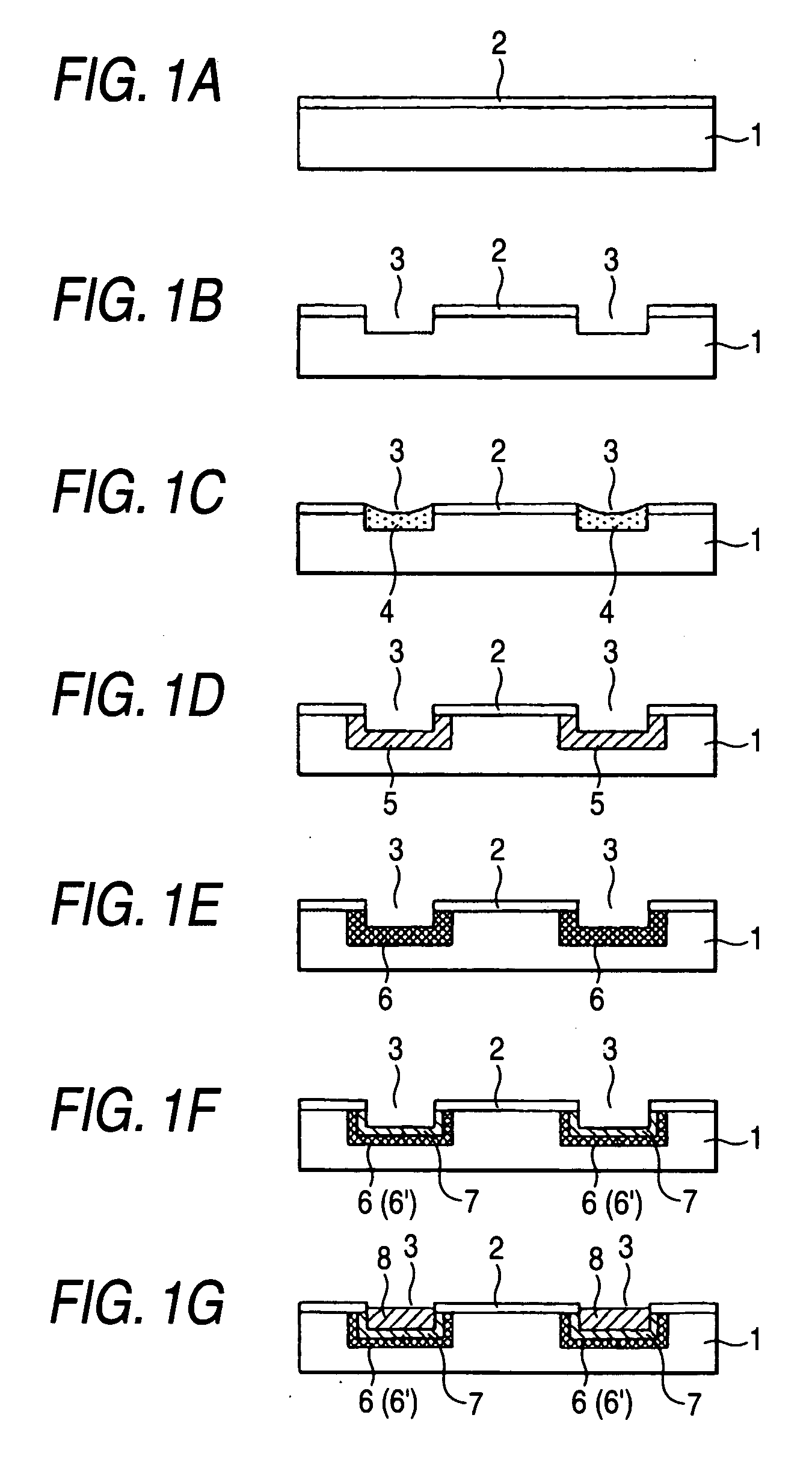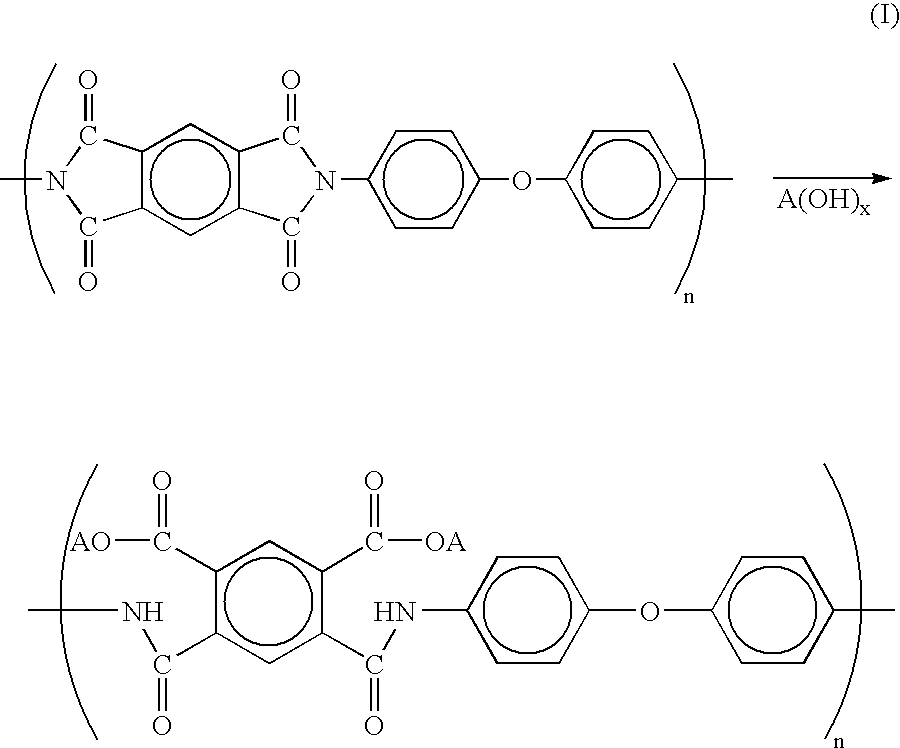Method for forming inorganic thin film pattern on polyimide resin
a polyimide resin and inorganic technology, applied in the direction of liquid/solution decomposition chemical coating, coating, printed circuit aspects, etc., can solve the problems of high cost, low productivity, and generation of many useless metal materials, and achieve high pattern precision and high reliability
- Summary
- Abstract
- Description
- Claims
- Application Information
AI Technical Summary
Benefits of technology
Problems solved by technology
Method used
Image
Examples
example 1
[0067] Polyimide film (manufacture by DuPont-Toray Co., Ltd; trade name: Kapton 200-H) was dipped in an ethanol solution, subjected to an ultrasonic cleaning for 5 minutes and dried in an oven at 100° C. for 60 minutes to clean the surface of the polyimide film.
[0068] In the meanwhile, a polystyrene solution was prepared by dissolving 50 parts by mass of polystyrene in 180 parts by mass of toluene and the polystyrene solution was uniformly applied on the surface of the polyimide film by a spin coating method under the condition of 1,500 rpm for 30 seconds. After that, it was kept for 10 minutes in an oven which was kept at 60° C. to form an alkali-resistant protective film of polystyrene on the polyimide film (refer to FIG. 1A). Film thickness of the alkali-resistant protective film was 0.5 μm.
[0069] Then an ultraviolet laser apparatus was used, a circuit pattern with a line width of 5 μm was drawn under the following conditions and the alkali-resistant protective film and the sup...
example 2
[0075] Acrylate resin (10 parts by mass) was dissolved in 80 parts by mass of terpineol to prepare an acrylate resin paste. Then, the acrylate resin paste was applied by a screen printing method via a screen plate of 300 meshes of SUS and 5 μm of emulsifier on the surface of polyimide film where the surface was cleaned in the same manner as in Example 1 and kept for 30 minutes in an oven of 110° C. to form an alkali-resistant protective film of the acrylate resin on the surface of the polyimide film (refer to FIG. 1A). Film thickness of this alkali-resistant protective film was 10 μm.
[0076] Then a circuit pattern of line width of 40 μm was drawn under the following condition using a YAG laser apparatus and the alkali-resistant protective film and the superficial portion of the polyimide film were removed to form a concave part in a pattern shape on the polyimide film (refer to FIG. 1B). Depth of the concave part was 18 μm.
Laser output50WWavelength1064nmOscillating operationpulseS...
example 3
[0082] Polypropylene (30 parts by mass) was dissolved in 180 parts by mass of toluene to prepare a polypropylene solution. Then, the polypropylene solution was uniformly applied by a dipping method under the condition of pulling-up speed of 20 mm / second on the polyimide film where the surface was cleaned in the same manner as in Example 1 and kept for 5 minutes in an oven kept at 40° C. to form an alkali-resistant protective film of the polypropylene on the surface of the polyimide film (refer to FIG. 1A). Film thickness of this alkali-resistant protective film was 0.03 μm.
[0083] Then a circuit pattern of line width of 3 μm was drawn under the following condition using a femtosecond laser apparatus and the alkali-resistant protective film and the superficial portion of the polyimide film were removed to form a concave part in a pattern shape on the polyimide film (refer to FIG. 1B). Depth of the concave part was 3 μm.
Laser output10WWavelength780nmOscillating operationpulseScannin...
PUM
| Property | Measurement | Unit |
|---|---|---|
| thickness | aaaaa | aaaaa |
| thickness | aaaaa | aaaaa |
| thickness | aaaaa | aaaaa |
Abstract
Description
Claims
Application Information
 Login to View More
Login to View More - R&D
- Intellectual Property
- Life Sciences
- Materials
- Tech Scout
- Unparalleled Data Quality
- Higher Quality Content
- 60% Fewer Hallucinations
Browse by: Latest US Patents, China's latest patents, Technical Efficacy Thesaurus, Application Domain, Technology Topic, Popular Technical Reports.
© 2025 PatSnap. All rights reserved.Legal|Privacy policy|Modern Slavery Act Transparency Statement|Sitemap|About US| Contact US: help@patsnap.com



